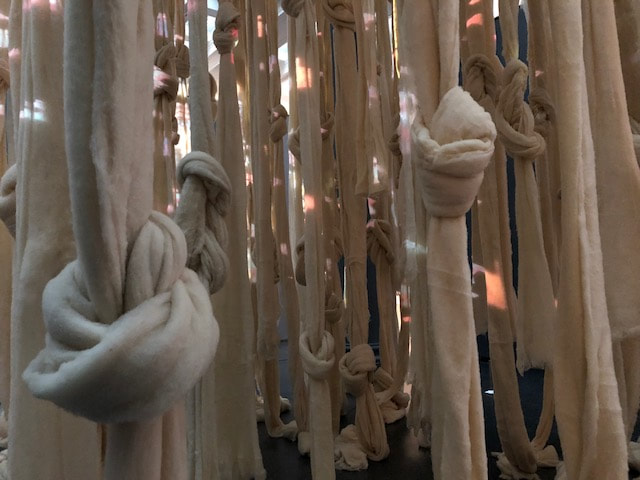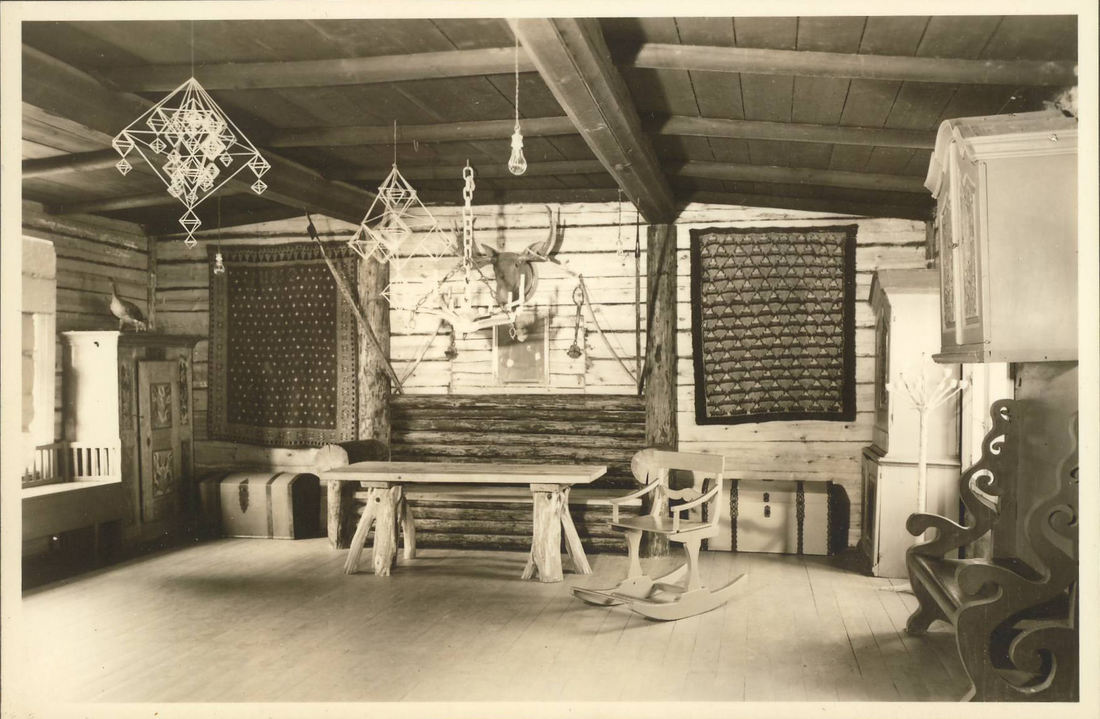|
At the Brooklyn Museum until November 25, 2018 is Cecilia Vicuña's Disappeared Quipu. "New York–based Chilean artist and poet Cecilia Vicuña has devoted a significant part of her artistic practice to studying, interpreting, and reactivating the quipus, which were banned by the Spanish during their colonization of South America. Drawing on her indigenous heritage, Vicuña channels this ancient, sensorial mode of communication into immersive installations and participatory performances." Read more about the artist and the installation here. The ginormous hanging knots immediately attracted my attention, as they take up the whole gallery space. As I started to learn about quipus and the history they hold in ancient ways of communicating, I started thinking about the complex translation process this technique embodies. I am still trying to wrap my brain around it! How do they know who they are talking to? What if the knots got out of order? I wish I could go to Performance: Living Quipu by Cecilia Vicuña on Sunday, September 23, 2018 from 2–3 pm. Cecilia Vicuña will create a participatory, improvisational poetry performance, weaving elements of spoken word, chant, and storytelling. Free with Museum admission, but RSVP strongly encouraged. Click here for more information about the event. ps. thank you, Jasmin, for introducing me to quipus when you came to visit me in Fiskars!
0 Comments
Rya från början av 1800-talet Ryan på väggen har ett speciellt fiskfjällsmönster och har nock på båda sidor. Fiskfjällsmönstret var vanligt på ryor som vävdes i Kisko trakten. Den här ryans historia anknyter också till Kisko. Innan den kom till Fiskars museum fanns den i Haapaniemi. Haapaniemi var ursprungligen en adelsgård med anor från 1500-talet, men genom jordförvärv övergick gården till Fiskars. Eftersom Kärkelä bruks förvaltare Axel Jonsson var intresserad av gamla föremål, fick han på Fiskars bolagets räkning åka runt till auktioner och köpa föremål till Haapaniemi, som sedan inreddes som en sorts jaktstuga. Under kriget flyttades föremålen för säkerhets skull bort från Haapaniemi och byggnaden började användas som sommarstuga. Text Fiskars museum +++ Ryijy 1800-luvun alusta Seinällä oikealla olevassa ryijyssä on erikoinen suomumainen kuvio ja sen molemmilla puolilla on nukkaa. Tällainen kuviointi oli tyypillinen Kiskon alueella kudotuissa ryijyissä. Tämän ryijyn historia liittyy niin ikään Kiskoon. Se on tullut Fiskarsin museolle Haapaniemestä. Haapaniemi on 1500-luvulta peräisin oleva aatelistila, joka myöhemmin siirtyi maakauppojen johdosta Fiskarsille. Koska Kärkelän ruukin johtaja Axel Jonsson oli kiinnostunut vanhoista esineistä, sai hän yhtiön laskuun ostaa esineitä Haapaniemeen, josta sisustettiin metsästysmaja. Toisen maailmansodan aikana esineistö siirrettiin varmuuden vuoksi pois Haapaniemestä ja siitä tuli kesänviettopaikka. Teksti Fiskarsin museo +++ Ryijy starting from the 1800s On the right side of the wall hangs a ryijy which has a special scale-like pattern and has loops on both sides. This type of ryijy weaving pattern was typical of the Kisko region. The history of this ryijy is also related to Kisko. It came to Fiskars museum from Haapaniemi. Haapaniemi was originally a noble estate dating back to the 1500s, but through land acquisition it later moved to Fiskars. Kärkelä’s ironworks manager, Axel Jonsson, was interested in old objects. He was able to buy objects at Haapaniemi, which he then placed in a hunting cabin. During the Second World War, the item was moved safely out of Haapaniemi and it then became a summer resort. Text Fiskars Museum ::: Viittaus: Fiskarsin museo/Fiskars museum Lisäksi olemme facebookissa: https://www.facebook.com/fiskarsmuseum/ Instagram: fiskarsmuseum |
Authors
Arlene Tucker is currently based in Helsinki, Finland. Archives
October 2022
Categories
All
|



 RSS Feed
RSS Feed
